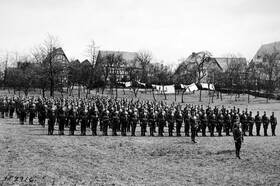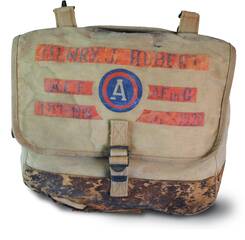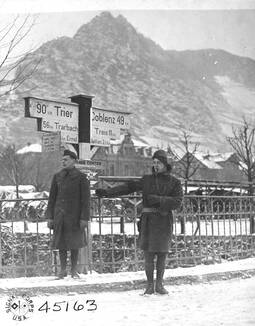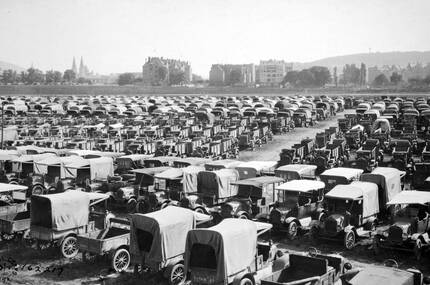The American Forces in Germany (A.F.G.)
Until February 1919, it remained unclear whether or not the war was actually over. Despite this, the Americans began continually withdrawing men.
With the signing of the Treaty of Versailles on June 28, 1919, the political situation eased, by which time only 100,000 Doughboys remained on the Rhine. A few days later, the Third Army was replaced by the newly created American Forces in Germany (A.F.G.) under the command of Major General Henry T. Allen (1859–1930). The A.F.G. was divided into two brigades: The 1st Brigade headquartered in Koblenz, and the 2nd Brigade headquartered in Andernach.
The former divisions of the Third Army returned to the United States and were partly replaced by fresh troops arriving from the States, with altogether only some 19,000 men left in late 1919. Many of the new men were not as well trained or disciplined as their predecessors, and most of them had not seen action during the war. Controlling these young men proved to be a challenge for General Allen.
By June 1, 1919, U.S. forces moved out of Trier, parts of the Hunsrück and Eifel, and by August, this Western territory was given to the French, leaving the Americans with the greater area around Koblenz. As a result, the American Occupation Zone shrunk to only half of its former size. The number of Doughboys was reduced to 16,500 men by early 1921 and 9,000 by early 1922.





